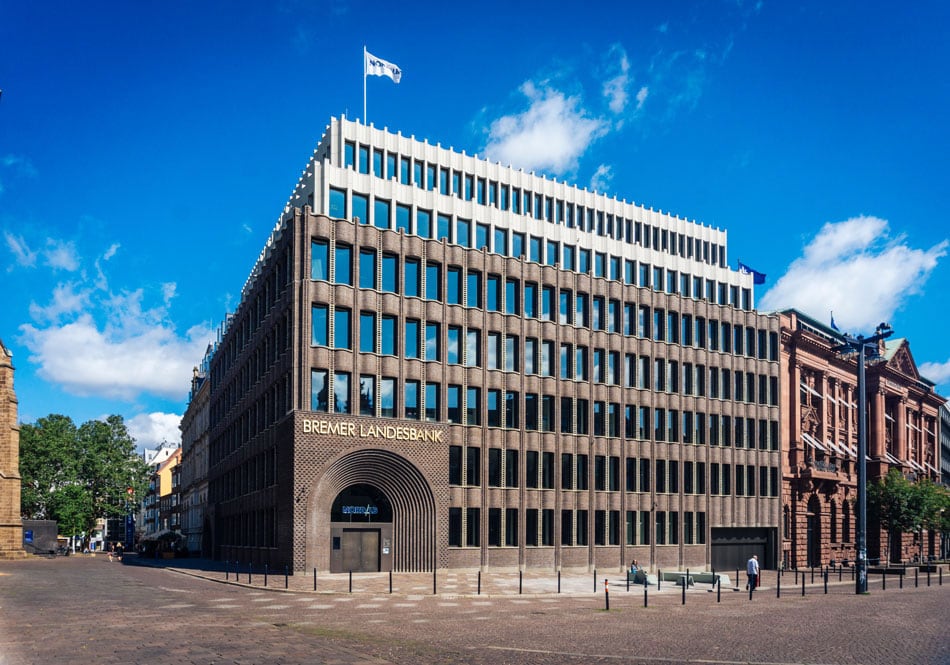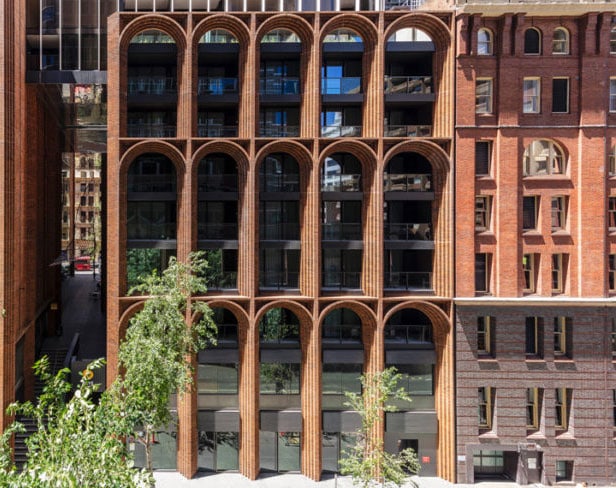Ask the expert: Billy Mavropoulos, co-founder and director of Bureau de Change
Deciding which building material to use for a project is no easy task. From sustainability and durability to performance and aesthetics, there’s a lot to consider and an awful lot resting on making the right choice. Here, we ask Billy Mavropoulos of architecture practice Bureau de Change – and architect behind award-winning The Interlock – about the role of brick in architecture and its contribution to the success of The Interlock.
Forterra: Billy, what role do you think brick plays in architecture, and what might it bring to a building that other materials don’t?
Billy: The humble brick is the most underrated material in construction. It is often linked with mass production and big, characterless structures, and is perceived as ‘standard’ or ‘expected’ and therefore ordinary. But it is so much more than that. It is beautiful, strong and versatile with endless potential, as we discovered when working on The Interlock.
Beyond the fact that brick comes in endless colours, finishes, shapes and forms, it can also be put together in countless ways to create flat or three-dimensional surfaces. It is a rich and tactile material which, when used in the right way, is able to convey a real sense of craftsmanship.

Forterra: Why did you decide to use brick for The Interlock project?
Billy: The decision to use brick was a response to the context of the site; it is surrounded by brick buildings ranging in date from the 1800s to the 1990s. Victorian brick-built vaults were also found under the site. We therefore decided to do something highly contextual.
The design of The Interlock absorbs all of the history around it. It takes the proportions of its neighbouring 19th century terrace, recasting its brick façade to create a building of uncertain heritage; one that is simultaneously historic and contemporary, familiar yet foreign.
Forterra: What made the Interlock a successful project and what part, if any, did brick play in that success?
Billy: The Interlock was a very successful project in the end because it tackles one of the main challenges faced by architects, planners and contractors when building in the centre of a city like London: how to build a building that is both contemporary and in keeping with its surroundings.
The versatility of brick was pivotal in achieving this because it allowed us to create a building that feels grounded within the history and context of the site while using contemporary fabrication and construction methods.
Forterra: Billy, what role do you think brick plays in architecture, and what might it bring to a building that other materials don’t?
Billy: The humble brick is the most underrated material in construction. It is often linked with mass production and big, characterless structures, and is perceived as ‘standard’ or ‘expected’ and therefore ordinary. But it is so much more than that. It is beautiful, strong and versatile with endless potential, as we discovered when working on The Interlock.
Beyond the fact that brick comes in endless colours, finishes, shapes and forms, it can also be put together in countless ways to create flat or three-dimensional surfaces. It is a rich and tactile material which, when used in the right way, is able to convey a real sense of craftsmanship.
Forterra: How important was it to be able to collaborate with the brick manufacturer when working on The Interlock?
“This project would never have been possible if it weren’t for the close collaboration between us and Forterra. We came up with the initial idea, modelled it in 3D and visualised it and got our client on board. Then came time to test its feasibility!
That was when Forterra stepped in and worked with us to rationalise the design. They helped us to understand how bricks work, how they are made, how they break and how they come together. They showed us the limitations of the materials and explained which parts of the brick making process are expensive and which aren’t. It was a process that lasted for months but was invaluable to the development of the design. Without it, the project wouldn’t have been realised in the same way.”
Forterra: What advice would you give to others considering whether brick is the right material for a project?
Billy: If you choose brick, try to use it in a different way – the potential is endless.
Forterra: Do you have a favourite brick project?
Billy: There are numerous brick projects that we love. Ones that stand out in particular are Bremer Landesbank, in Germany, by Caruso St John Architects, and Arc, in Sydney, Australia, designed by Koichi Takada Architects.

The Interlock
Forterra’s technical team worked closely with Bureau de Change drawing the building’s new façade brick for brick to ensure technical possibility and aesthetic ambitions aligned. The bricks, in Etruria Clay Blue, were designed and produced by Forterra’s Cradley Special Bricks facility.
Read more about Forterra’s work with Bureau de Change on The Interlock here.
See more case studies